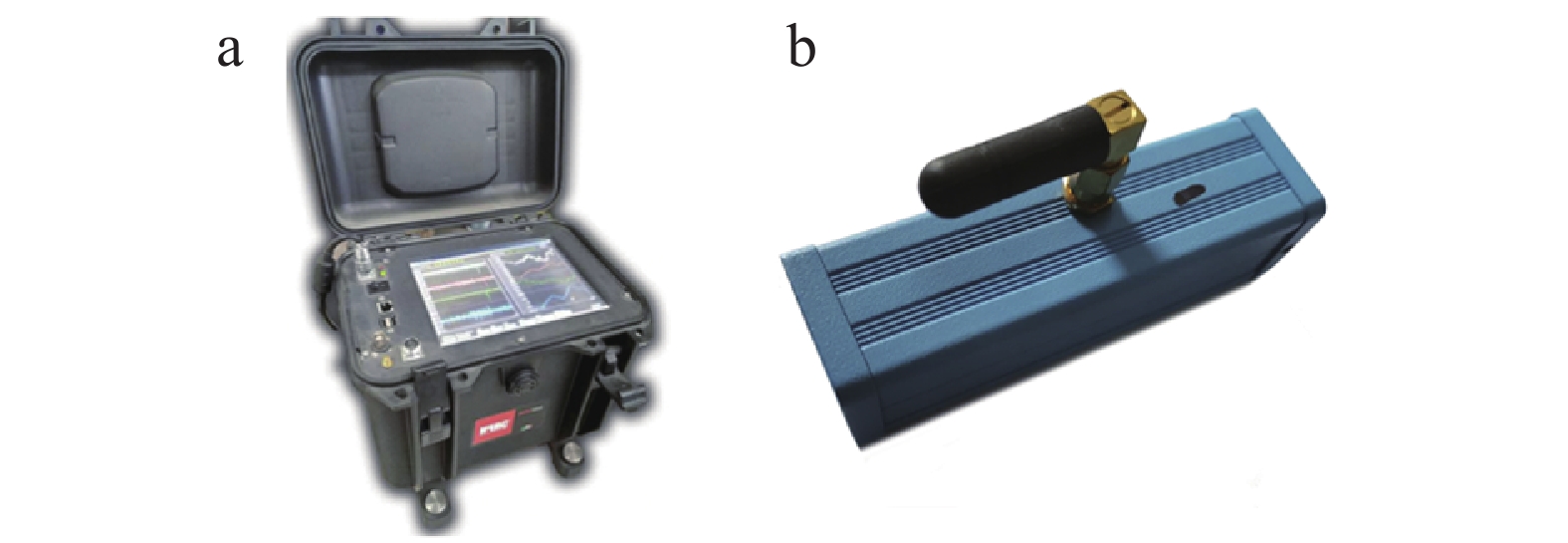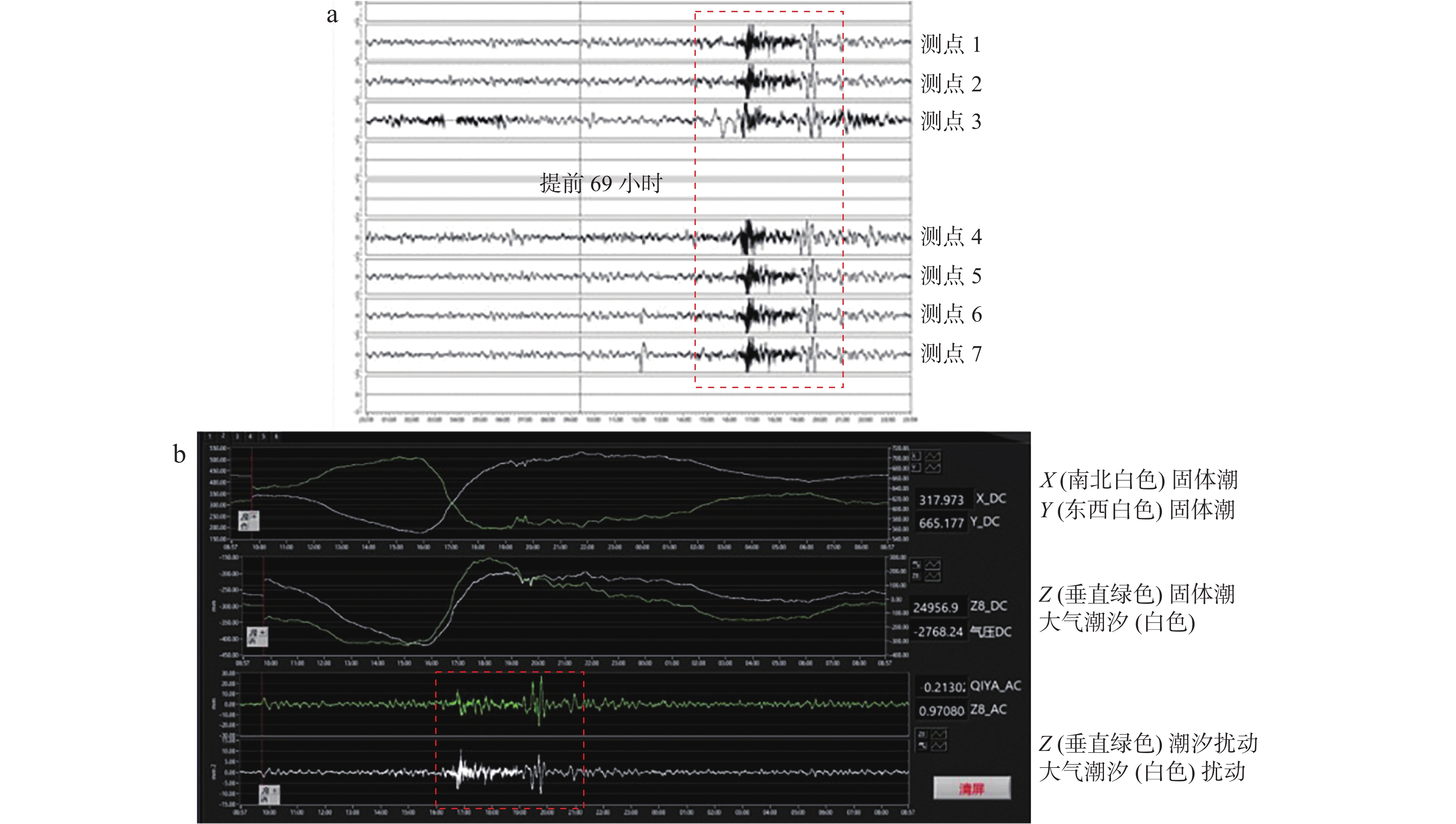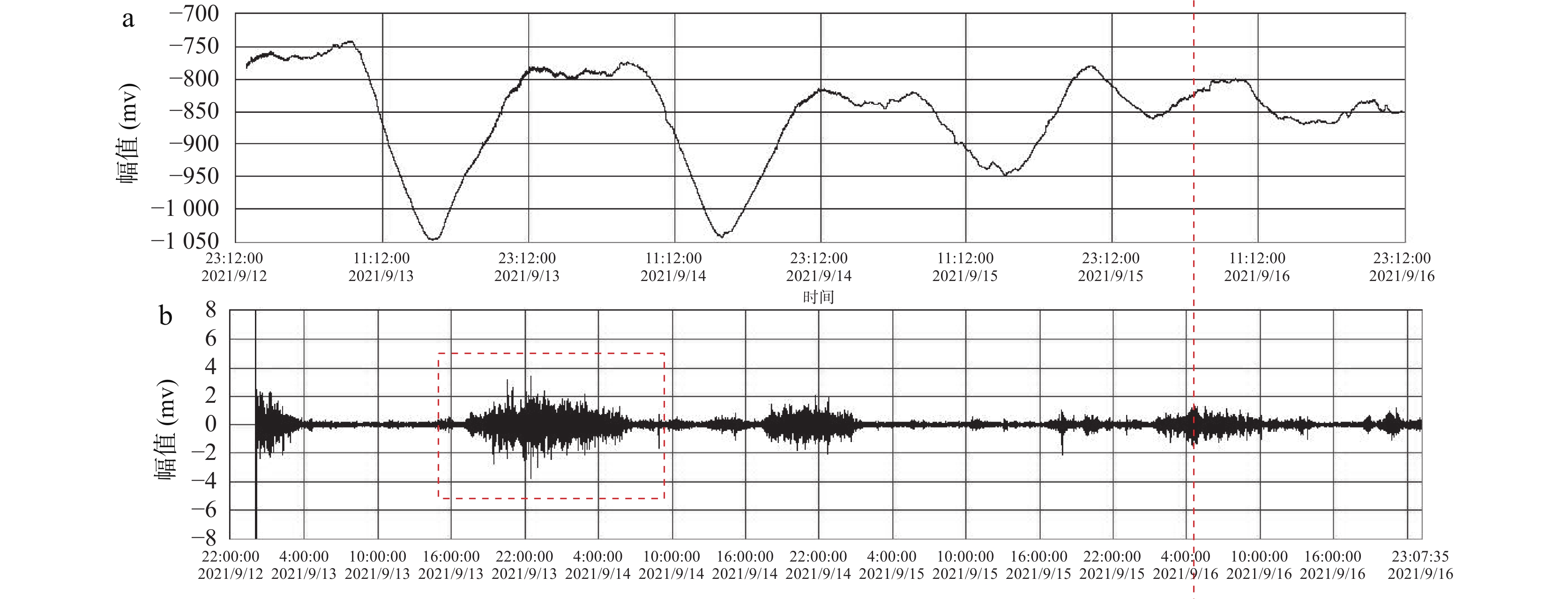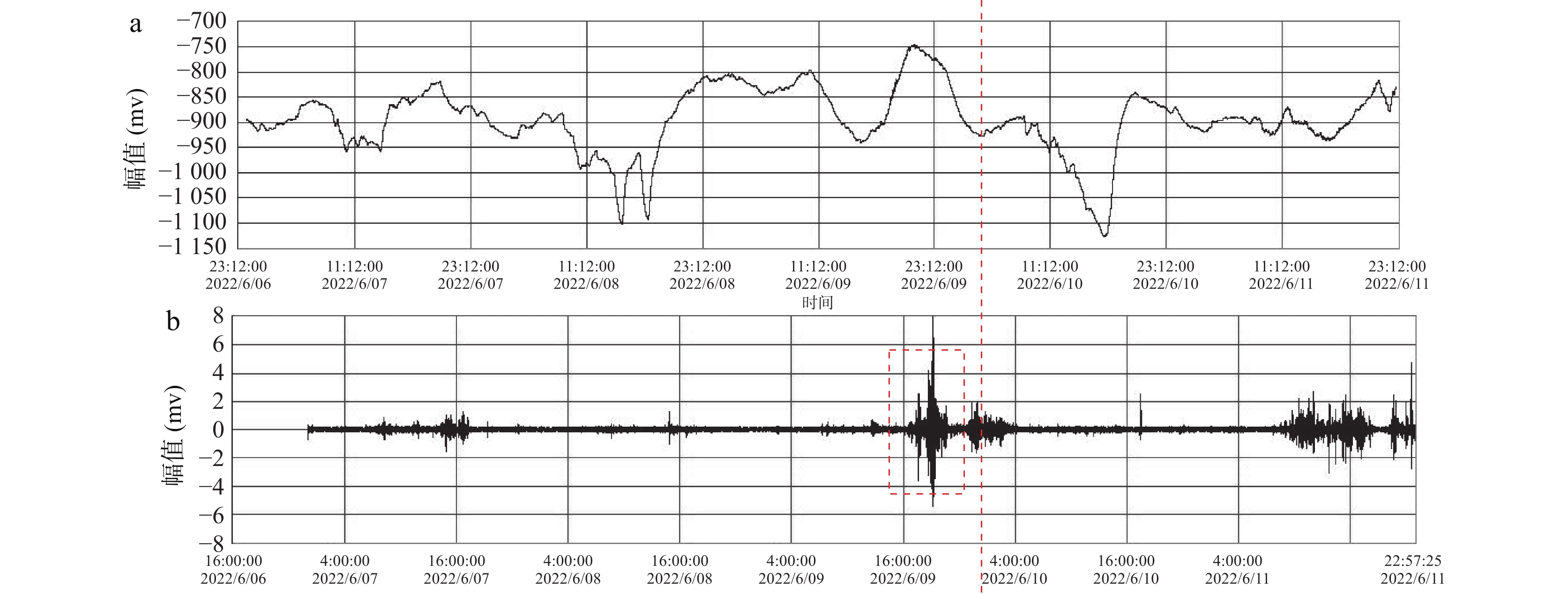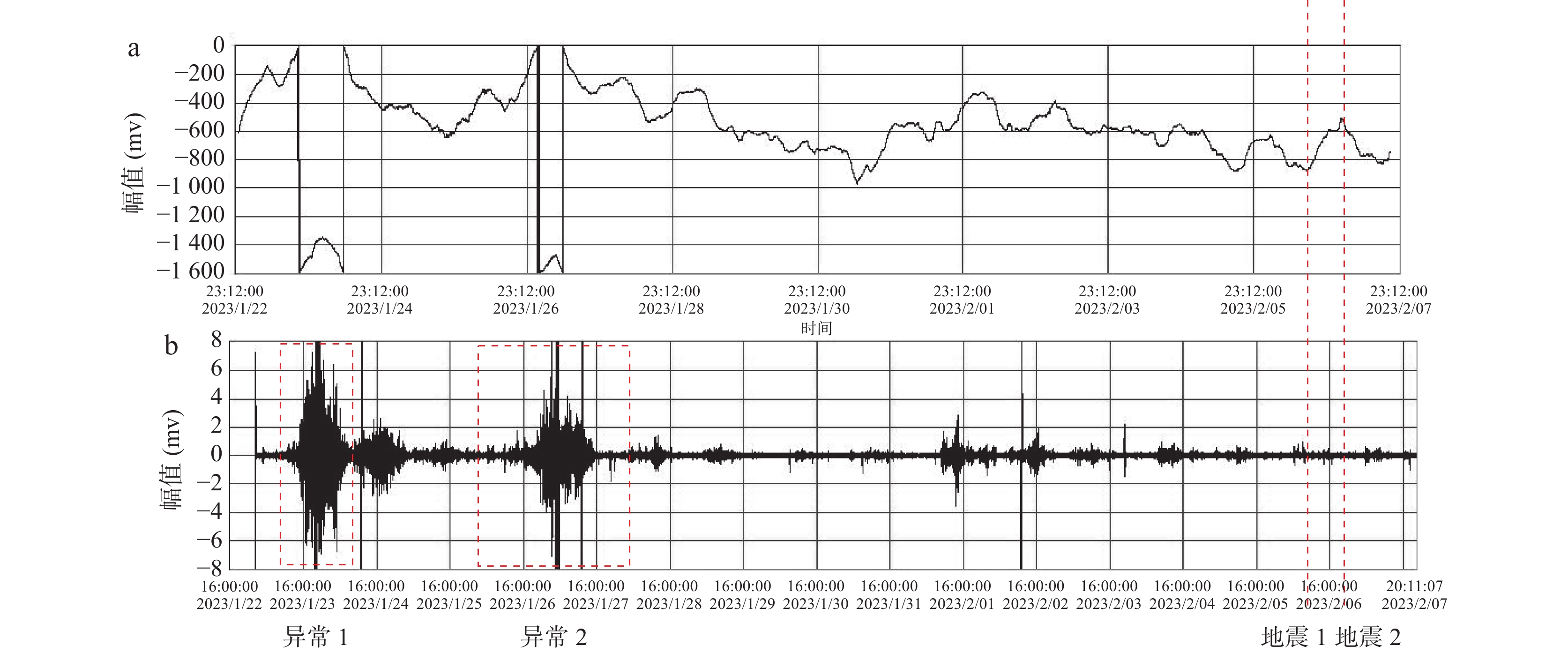Earthquake Precursors and Short–impending Prediction of Strong Earthquakes Based on Dynamic Gravity Information
-
摘要:
地震预报是当今世界尚未破解的重大科技难题,短临地震预报是地震预报的难点,有效的前兆信息则是短临预报的关键。笔者围绕短临地震预报难题,研制了高精度动态固体潮汐重力仪和大气潮汐重力仪,成功捕获到2010~2023年间的玉树7.1级地震、土耳其7.8级地震等震前几十个小时的动态重力场变化信息。这些信息再现了强震孕育–发生的过程,初步揭示短临阶段“基本稳定→闭锁蓄能→震前平静→能量释放”的强震物理机制,可作为短临地震预报的前兆信息。为实现对短临地震“时−空−强”的准确预报,提出通过动态重力场变化组网观测和分布式前兆信息数据库建设,进一步揭示不同类型地震的动态重力信号响应规律,建立强震发生概率、时间、震中位置及震级预报模型的可行性路径,渴望破解强震短临预报的世界难题。
Abstract:How to accurately predict earthquake is a global scientific problem that needs to be solved at present, especially for short–impending earthquake prediction, which has been the hot topic of long–term attention in the earthquake field, and obtaining effective precursor information is the key to forecast this type of earthquake. Currently, it is difficult to predict short–impending earthquake because of the following reasons: firstly, there is lack of universal precursor information which can reflect the occurrence process of strong earthquake; second, the scientific community’s understanding of the earthquake initiation mechanism is not comprehensive enough; finally, the earthquake prediction theory and its technical methods have not reached the level of application. In this context, we found that the dynamics of gravitational field at ultra–low frequencies may be highly correlated with the occurrence of short–impending earthquake. Therefore, a high–precision dynamic solid tidal gravimeter and an atmospheric tidal gravimeter were developed to capture gravity anomaly, which can detect the gravitational field changes of 1~10 µGal at ultra–low frequencies (1~30 mHz). According to the monitoring, the dynamic gravity field changes of dozens of strong earthquakes from 2010 to 2023 were successfully captured, such as the Yushu earthquake in China (7.1–magnitude), the Turkey earthquake (7.8–magnitude), and Indonesia earthquake (7.4–magnitude), etc. These data have the potential to be used as the precursor information of short–impending earthquake prediction as they can reflect the whole process of earthquake from preparation to occurrence. Furthermore, the physical mechanism of "basic stability→occluded energy storage→pre–shock calm→energy release" for strong earthquake in short–impending stage was further verified. In addition, a plausible approach is proposed to achieve the time–space–intensity prediction for the short–impending earthquake, that means a prediction model of probability, time, location, and magnitude of strong earthquake is constructed based on high–density network observation and distributed precursor information database construction, and finally realize the release of early warning information several hours before the earthquake. This study remains still in the exploration stage, but the in–depth mining of precursor information hidden by the signal of gravity field changes before the earthquake will undoubtedly bring hope to the successful prediction of short–impending strong earthquake.
-

-
表 1 典型强震与动态重力时变异常特征对应关系表
Table 1. Correspondence between typical strong earthquakes and dynamic gravity time–varying anomaly characteristics
序号 地震名称 发震时刻
(y/m/d h∶mm)异常出现时间
(y/m/d h∶mm~h∶mm)异常提前
时间(h)异常幅值(mv)
与持续时间(h)异常
峰值
(mv)地震
震级
(MS)震源
深度
(km)震中–
观测点
距离(km)初值-
峰值
斜率地震
前兆
信息2~4 4~6 6~8 >8 1 4·14玉树地震 2010/4/14 7∶49 2010/4/10 2∶00~6∶00 66 3.7 0.3 – – 5.9 7.1 14 1088.25 5.7 明显 2010/4/12 5∶45~10∶15 118 2.5 0.9 0.85 0.25 8.4 14.3 2 4·20雅安地震 2013/4/20 8∶02 2013/4/19 8∶20~16∶00 23.7 4.2 2 1.5 – 9.8 7.0 13 675.90 6.3 明显 3 9·28印尼地震 2018/9/28 18∶02 2018/9/25 7∶00~10∶00 83 2.7 0.3 – – 5.1 7.4 10 3992.93 1.0 明显 4 4·18花莲地震 2019/4/18 13∶01 2019/4/15 16∶00~21∶00 69 3 0.9 0.8 0.3 10.9 6.7 24 1749.46 2.9 明显 5 5·22玛多地震 2021/5/22 2∶04 2021/05/19 11∶00~11∶30 63 – 0.5 – – 5.7 7.4 10 926.09 3.5 明显 6 9·16泸县地震 2021/9/16 4∶33 2021/9/13 20∶20~2021/9/14 02∶30 56 5.83 – – – 3.9 6.0 10 607.25 0.8 较明显 7 6·1芦山地震 2022/6/1 17∶00 2022/05/29 12∶00~17∶00 77 5 – – – 3.9 6.1 17 653.81 0.8 较明显 8 6·10马尔康地震 2022/6/10 0∶03 2022/6/09 18∶00~20∶00 6 1.57 0.25 0.1 0.08 9.2 6.0 10 642.76 4.7 明显 9 9·5泸定地震 2022/9/5 12∶52 2022/9/2 15∶40~17∶30 69 1.8 – – – 2.9 6.8 11 774.72 0.7 较明显 10 2·6土耳其地震 2023/2/6 9∶17 2023/1/23 15∶00~2023/1/24 4∶00 330.2 11.2 1.5 0.2 0.1 8.5 7.8 20 6230 4.7 明显 2023/1/26 22∶00~2023/1/27 12∶00 255.4 13.2 0.5 0.3 – 6.4 7.8 3.5 11 2.23塔吉克斯坦地震 2023/2/23 8∶37 2023/2/18 12∶00~19∶00 116.6 6.3 0.5 0.2 – 7.5 7.2 10 3215 2.7 明显 -
[1] 毕金孟, 蒋长胜. 可操作的地震预测 (OEF) 国际研究动态综述[J]. 中国地震, 2017, 33(1): 1-13 doi: 10.3969/j.issn.1001-4683.2017.01.001
BI Jinmeng, JIANG Changsheng. A review on the international research of the Operational Earthquake Forecasting(OEF)[J]. Earthquake Research In China, 2017, 33(1): 1-13. doi: 10.3969/j.issn.1001-4683.2017.01.001
[2] 陈运泰. 地震预测: 回顾与展望[J]. 中国科学 (地球科学), 2009, 39(12): 1633-1658
CHEN Yuntai. Earthquake prediction: Retrospect and prospect (in Chinese)[J]. Sci China Ser D-Earth Sci, 2009, 39(12): 1633-1658.
[3] 陈石, 王谦身, 徐伟民, 等. 从重力异常研究岩石圈内部变形及力学特性进展[J].地球物理进展,2014,29(5):1996-2003.
CHEN Shi, WANG Qiansheng, XU Weimin, et al. Progress in studying internal deformation and mechanical properties of the lithosphere from gravity anomalies[J]. Advances in Geophysics, 2014, 29(5): 1996-2003.
[4] 陈石,王谦身,祝意青,等. 从重力异常研究岩石圈内部变形及力学特性进展[J].地球物理进展,2011, 26(4): 1147-1156.
CHEN Shi, WANG Qiansheng, ZHU Yiqing, et al. Advances in deformation and mechanical properties of lithospheric interior from gravity anomalies[J]. Geophysical Progress, 2011, 26(4): 1147-1156.
[5] 刘代芹, 陈石, 王晓强, 等. 2021伽师6.4级地震前后震源区视密度变化及其构造意义[J]. 地震地质,2021,43(2):311-328.
LIU Daiqin, CHEN Shi, WANG Xiaoqiang, et al. Changes in apparent density in the source area before and after the 2021 Gashi 6.4 magnitude earthquake and its tectonic significance[J]. Earthquake Geology, 2021,43(2):311-328.
[6] 马瑾. 地震预测战略中若干问题的讨论− 纪念为地震事业奉献一生的梅世蓉先生座谈会[J]. 国际地震动态, 2018, 22-24
MA Jin. Discussion on Some Issues in Earthquake Prediction Strategies-Symposium to commemorate Mr. Shiyong Mei who has dedicated his life to the earthquake industry[J]. Recent Developments in World Seismology, 2018, 22-24.
[7] 马宗晋, 傅征祥, 张郢珍, 等. 1966-1976中国九大地震[M]. 北京: 地震出版社, 1982, 1−5.
MA Zongjin, FU Zhengxiang, ZHANG Yingzhen, et al. Nine major earthquakes in China from 1966 to 1976[M]. Beijing: Seismological Press, 1982, 1−5.
[8] 毛经伦, 祝意青. 地面重力观测数据在地震预测中的应用研究与进展[J]. 地球科学进展, 2018, 33(3): 236-247 doi: 10.11867/j.issn.1001-8166.2018.03.0236
MAO Jinglun, ZHU Yiqing. Progress in the application of ground gravity observation data in earthquake prediction[J]. Advances in Earth Science, 2018, 33(3): 236-247. doi: 10.11867/j.issn.1001-8166.2018.03.0236
[9] 王武星, 石耀霖, 顾国华, 等. GRACE卫星观测到的与汶川Ms8.0地震有关的重力变化[J].地球物理学报,2010,53(8):1767-1777.
WANG Wuxing, SHI Yaolin, GU Guohua, et al. Gravity changes associated with the Wenchuan Ms8.0 earthquake as observed by GRACE satellite[J]. Journal of Geophysics, 2010, 53(8): 1767-1777.
[10] 王同庆, 陈石, 梁伟锋, 等. 2016年门源MS6.4地震前的区域重力场变化与定量参数分析[J]. 地震地质, 2018, 40(2): 349-360.
WANG Tongqing, CHEN Shi, LIANG Weifeng, et al. Regional gravity field changes and quantitative parameter analysis before the 2016 Menyuan MS6.4 earthquake[J]. Earthquake Geology, 2018,40(2):349-360.
[11] 许忠淮. 应重视大地震预测物理基础的研究[J]. 地震, 2019, 39(2): 11-18 doi: 10.3969/j.issn.1000-3274.2019.02.002
XU Zhonghuai. In Search of a New Physical Basis for Large Earthquake Prediction[J]. Earthquake, 2019, 39(2): 11-18. doi: 10.3969/j.issn.1000-3274.2019.02.002
[12] 尹凤玲, 蒋长胜, 姜丛. 年尺度地震预测模型的国际研究现状[J]. 地球与行星物理论评, 2021, 52(1): 54-60
YIN Fengling, JIANG Changsheng, JIANG Cong. Research progress of next-year earthquakeforecasts in the world[J]. Reviews of Geophysics and Planetary Physics. 2021, 52(1): 54-60.
[13] 张茂省. 地质灾害风险管理理论方法与实践[M]. 北京: 科学出版社, 2021: 1−412
ZHANG Maosheng. Geological hazard risk management theory and practice[M]. Beijing: Science Press, 2021: 1−412.
[14] 张茂省, 贾俊, 王毅等. 基于人工智能(AI)的地质灾害防控体系建设[J]. 西北地质, 2019, 52(2): 103-116 doi: 10.19751/j.cnki.61-1149/p.2019.02.011
Zhang Maosheng, Jia Jun, Wang Yi et al. Construction of geological disaster prevention and control system based on AI[J]. Northwest Geology, 2019, 52(2): 103-116. doi: 10.19751/j.cnki.61-1149/p.2019.02.011
[15] 张茂省. 再谈地灾调查评估是移民搬迁的关键[A]. 秦巴山区地质灾害与防治学术研讨会论文集[C]. 2015: 8−9
ZHANG Maosheng. Re-talking about geological disaster survey and assessment as the key to migration relocation[A]. Proceedings of the Symposium on Geological Disasters and Prevention in the Qinba Mountains[C]. 2015: 8−9.
[16] 祝意青,梁伟锋,湛飞并,等.中国大陆重力场动态变化研究[J].地球物理学报, 2012,55(3):804-813.
ZHU Yiqing, LIANG Weifeng, ZHAN Feibing, et al. Study on the dynamics of gravity field in mainland China[J]. Journal of Geophysics, 2012,55(3):804-813.
[17] 祝意青, 梁伟锋, 赵云峰, 等. 2017年四川九寨沟Ms 7.0地震前区域重力场变化[J].地球物理学报, 2017,60(10):4124-4131.
ZHU Yiqing, LIANG Weifeng, ZHAO Yunfeng, et al. Regional gravity field changes before the 2017 Jiuzhaigou Ms 7.0 earthquake in Sichuan[J]. Journal of Geophysics, 2017,60(10):4124-4131.
[18] 祝意青, 申重阳, 张国庆等. 我国流动重力监测预报发展之再思考[J]. 大地测量与地球动力学, 2018, 38(5): 441-446 doi: 10.14075/j.jgg.2018.05.001
ZHU Yiqing, SHEN Chongyang, ZHANG Guoqing. Rethinking the Development of Earthquake Monitoring and Prediction in Mobile Gravity[J]. Journal of Geodesy and Geodynamics, 2018, 38(5): 441-446. doi: 10.14075/j.jgg.2018.05.001
[19] 祝意青, 闻学泽, 孙和平等. 2013年四川芦山Ms7.0地震前的重力变化[J]. 地球物理学报, 2013, 56(06): 1887-1894
ZHU Yiqing, WEN Xueze, SUN Heping. Gravity changes before the Lushan, Sichuan, Ms=7.0 Earthquake of 2013[J]. Chinese Journal of Geophysics, 2013, 56(06): 1887-1894.
[20] Bolton, D. C. , Shreedharan, S. , Rivière, J. , Marone, C. Acoustic Energy Release During the Laboratory Seismic Cycle: Insights on Laboratory Earthquake Precursors and Prediction[J]. Journal of Geophysical Research: Solid Earth, 2020, 125(8), e2019JB018975.
[21] Chen, S. , Liu, M. , Xing, L. , Xu, W. , Wang, W. , Zhu, Y. , Li, H. . Gravity increase before the 2015 Mw 7.8 Nepal earthquake[J]. Geophysical Research Letters, 2017, 43(1): 111-117.
[22] Evans R. . Assessment of schemes for earthquake prediction[J]. Geophysical Journal International, 1997, 131(3): 413-420. doi: 10.1111/j.1365-246X.1997.tb06585.x
[23] Geller, R. J. . Earthquake prediction: a critical review[J]. Geophysical Journal International, 1997, 131(3): 425-450. doi: 10.1111/j.1365-246X.1997.tb06588.x
[24] Geller R J, Jackson D D, Kagan Y Y, et al. Earthquakes cannot be predicted. Science, 1997b, 275(5306): 1616−1616.
[25] Kagan, Y. Y. , Knopoff, L. . Statistical short-term earthquake prediction[J]. Science, 1987, 236(4808): 1563-1567. doi: 10.1126/science.236.4808.1563
[26] Keilis-Borok, V. . Earthquake prediction: State-of-the-art and emerging possibilities[J]. Annual review of earth and planetary sciences, 2002, 30(1): 1-33. doi: 10.1146/annurev.earth.30.100301.083856
[27] Lomnitz C. Fundamentals of earthquake prediction[M]. John Wiley & Sons, 1994.
[28] Ouzounov D, Pulinets S, Jann-Yenq L, et al. Multiparameter Assessment of Pre-Earthquake Atmospheric Signals[M]. Washington D C: Amer Geophysical Union, 2018: 339−359.
[29] Panet I , Bonvalot S , Narteau C , et al. Migrating pattern of deformation prior to the Tohoku-Oki earthquake revealed by GRACE data[J]. Nature Geoscience, 2018, 11(5): 367−373.
[30] Sykes, L. R. , Shaw, B. E. , Scholz, C. H. . Rethinking earthquake prediction[J]. Pure and Applied Geophysics, 1999, 155(2): 207-232.
[31] Tozzi, R. , Masci, F. , Pezzopane, M. . A stress test to evaluate the usefulness of Akaike information criterion in short-term earthquake prediction[J]. Scientific reports, 2020, 10(1): 1-9. doi: 10.1038/s41598-019-56847-4
[32] Wyss, M. , Aceves, R. L. , Park, S. K. , Geller, R. J. , Jackson, D. D. , Kagan, Y. Y. , &Mulargia, F. . Cannot earthquakes be predicted[J]. Science, 1997, 278(5337): 487-490. doi: 10.1126/science.278.5337.487
-



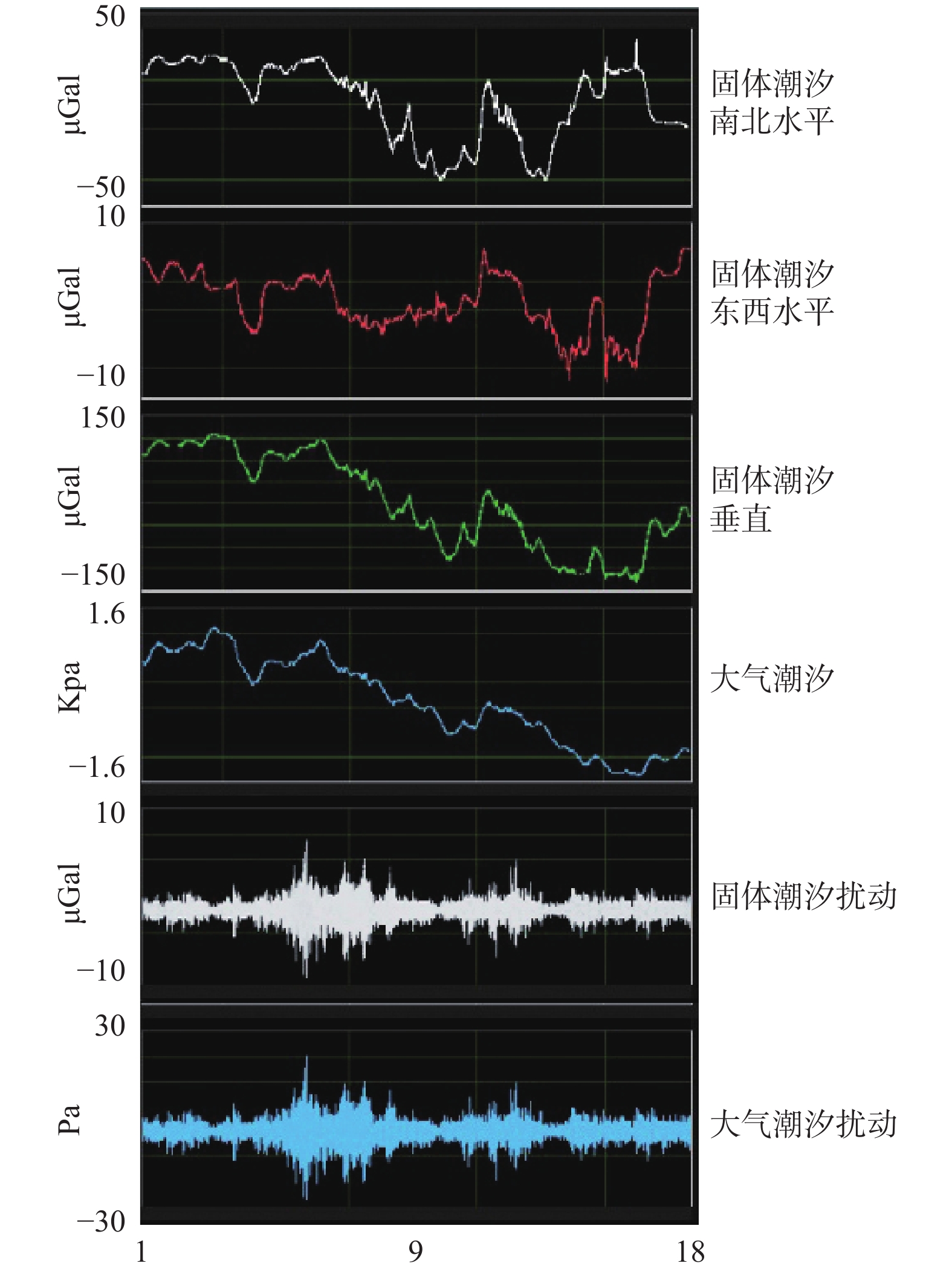
 下载:
下载:
